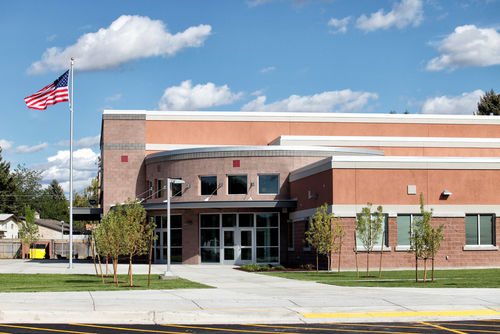Building operations account for a whopping 35% of U.S. carbon dioxide (CO2) emissions, and renovating them is a key strategy for combating climate change, according to the Lawrence Berkeley National Laboratory (Berkeley Lab). However, less than 1% of buildings are retrofitted each year, partly stemming from the high cost of identifying what retrofits a building―or especially an entire building portfolio―needs.

The Building Efficiency Targeting Tool for Energy Retrofits (BETTER)―a free, award-winning online tool developed by Berkeley Lab with support from the U.S. Department of Energy’s (DOE) Building Technologies Office―increases the speed and scale of energy retrofit identification in commercial buildings. The virtual tool enabled one California state agency to avoid millions of dollars in audit costs and save hundreds of thousands in annual energy costs.
Results
Berkeley Lab says BETTER replaces costly in-person Level 1 audits, and it identifies simple no- and low-cost energy efficiency interventions that can immediately cut energy usage, costs, and greenhouse gas (GHG) emissions between 5% and 10% portfolio-wide. BETTER also prioritizes facilities for more in-depth Level 2 audits and analysis based on their potential for deeper energy savings.
With its ability to analyze an entire portfolio based solely on building location, type, square footage, and monthly utility bills, BETTER is rapidly gaining traction in the marketplace: 480 organizations, including many public-sector groups, have adopted it since a beta version was released in 2020.
A California state agency used BETTER to streamline energy efficiency audits and retrofits across a large, geographically diverse, and aging portfolio of 450 buildings. The agency avoided Level 1 audit costs of $3.3 million and targeted nine buildings for in-person Level 2 audits and subsequent retrofits. The retrofits in nine buildings, such as installing occupancy sensors and optimizing chiller controls, will save an estimated $834,000 annually and have a payback of 3.4 years.
Eric Noller, Principal at Energy Resources Integration LLC, which partnered with the state agency to implement the audits and retrofits, said, “The ability of the tool to go beyond benchmarking by offering energy efficiency measure recommendations is extremely valuable, particularly at times when on-site assessments are either not practical or feasible.”
Prince William County Public Schools in Virginia, where 40% of students are economically disadvantaged, used BETTER to audit 62 schools. The audit revealed eight schools where no- and low-cost actions, such as increasing cooling setpoints and reducing equipment schedules, saved $77,000 in annual energy costs.
“With its simple data inputs and powerful analytics,” observed Bryan Conrad, Energy Education Coordinator for the district, “BETTER is poised to help hundreds of school districts across the country improve their energy, financial, and environmental performance.”
Energy General LLC is using BETTER to identify buildings in New England’s underserved neighborhoods that are most in need of energy improvements through a program called Rapid Retrofits. It’s a grassroots effort.
Company Founder Tom Strumolo says, “BETTER offers a possibility of delivering efficiency retrofits in underserved markets faster and cheaper by orders of magnitude.”
Upgrades
The recently released BETTER v.1 offers enhanced capabilities, such as interactive dashboards, an improved user interface, and a RESTful API, which allows for integration with other energy management tools and platforms. BETTER can be used in combination with the U.S. Environmental Protection Agency (EPA) ENERGY STAR Portfolio Manager and DOE’s Building Energy Asset Score to help deliver both superior structural performance and operational energy performance.
BETTER’s analytical capabilities are also integrated with DOE’s Standard Energy Efficiency Data (SEED) Platform used by cities and states to comply with benchmarking ordinances. This integration enables SEED users to go beyond building energy data management and reporting to identify interventions to reduce operational energy usage, costs, and GHG emissions.
In recognition of BETTER’s potential to serve building portfolios with limited resources, such as public school districts and public housing, the next version of BETTER will expand retrofit identification for multifamily residential housing.
A no-cost tool that can identify no- and low-cost retrofits using readily available building information and utility bills, BETTER supports the Biden Administration’s goal of a 100% clean energy economy that serves everyone and reduces the energy burdens in underserved and disadvantaged communities, according to Berkeley Lab.
More information about BETTER is available here.
